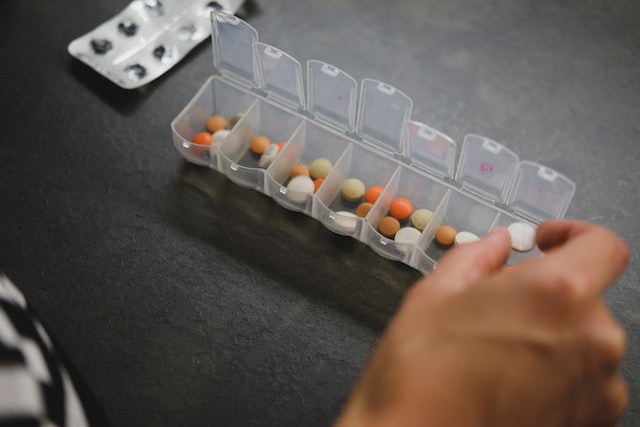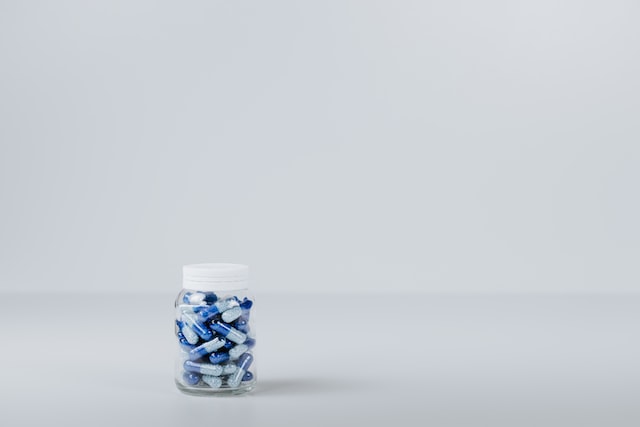Preparing for the Pharmacy Technician Certification Exam requires studying the PTCB top 200 drugs. While equations get a lot of attention, a considerably greater component of the test is made up of questions about medications. A range of knowledge about drugs is anticipated; it makes up about 40% of the PTCE’s topic outline. When the PTCB changed the exam’s topic outline and qualifying standards in 2020, this was expanded. names, including brand and generic, categories, uses, health consequences, combinations, precautions, and more!
There are many drugs, and pharmacists study them for the greater part of their 4-year Ph.D. degrees in order to be sufficiently knowledgeable to join the industry. For test takers who haven’t worked in a pharmacy environment for a sizable period of time, knowing all of this material may be extremely intimidating.
On this website, we offer thousands of free PTCE practice tests to help you thoroughly prepare for this exam!

What Do You Really Need to Know?
Following are a few suggestions to make your study time more effective as you go through the PTCB top 200 drugs list:
Classes of Drugs
To begin with, be sure to group the medications according to their classifications. It becomes much simpler to remember all you need to know about a certain medicine if you can memorize which class it falls under. You may now have roughly 50 distinct symptom profiles, hypersensitivity reaction profiles, etc. as opposed to 200.
Even though pharmaceuticals from the same class might have various indications and outcomes, it is far advisable to spend your time just studying the shared characteristics among a certain class of medications.
Brand and Generic Name Equivalents
On the PTCB, questions about drug brands and generic name equivalents are perhaps the most frequent. As a result, there is one place that you should aim to memorize for all medications. It might be beneficial to get familiar with the typical generic name prefixes for some of the classes. Pril for ACE inhibitors, Sartan for ARBs, Olol for beta-blockers, and Statin for statins are a few instances.
Indications
You must be knowledgeable about a medication’s typical use. Understanding drug classifications at this point is crucial! You will be in terrific condition if you can remember the most typical application for the best pharmaceutical classes.
You may significantly reduce the amount of time you spend studying by associating a certain medication with a drug class and being familiar with the common uses of the medicines in that class. There may be several applications for certain medications, but you ought to only be focused on the main or most frequent one. This is where the study guide we provide at the conclusion of this post comes in very handy.

Side Effects, Interactions, and Contraindications
People often get confused at this point. You may find a seemingly limitless list of detrimental reactions, combinations, precautions, and contraindications if you search for details about a specific medicine. Fortunately, not all of this data is demanded of you for each medicine. This topic was recently covered in a post on the Pharmacy Technician Certification Board Community forum.
The intention of the exam, according to one of the test authors, is not for test-takers to be ready to respond to difficult questions about each possible negative effect of a medicine. They want you to be knowledgeable about the prominent, apparent ones. Blood loss while using anticoagulants or hypoglycemia (low blood sugar) after taking insulin are two examples of major, visible adverse effects. Once again, the study guide we’ve provided should point you in the direction of the information you want.
Read more >> ExCPT vs PTCB: Which is the Most Suitable for You?
Strategy Development for the Top 200 Drugs
The great news is that there are various approaches you can utilize to acquire only the data you need to ace the test. It’s crucial to strike a careful balance between spending time on the most relevant drug information and making sure you don’t skip over the remaining 60% of the test material. Choosing to concentrate on just the top 200 medications is an obvious strategy. Even yet, it takes a lot of practice and effort to memorize this information for 200 different medicines.
You have to sharpen your attention a little bit more in order to make this simpler and guarantee that you have enough time to acquire the other subject areas. Your knowledge of every drug’s indications, adverse effects, contraindications, etc. is not the goal of the PTCB. However, you must be aware of the major, apparent ones.
The best method to learn about the top 200 medications is to first get familiar with those pharmaceuticals that share the active component, either in regards to the medication’s composition or its class, or the condition it is intended to treat. We look at 20 of these medications below.
| Medicine / Active Ingredient | Memory Method |
|---|---|
| Synthroid | Be aware that the medication levothyroxine is used to treat hypothyroidism. Take note of the medication's name: Synthroid. |
| Levothyroxine | |
| Zithromax | Several bacterial illnesses are treated with azithromycin, a medication. Zithro appears in both the drug and the treatment. |
| Azithromycin | |
| Lipitor | Lipids—fats—and –tor—atorvastatin—give Lipitor its name. Statins lower lipids (cholesterol). |
| Atorvastatin | |
| Glucophage | Glucophage comes from gluco—sugar—and phage—eater. This term fits since metformin treats type 2 diabetes. |
| Metformin | |
| Lamictal | Both the medicine and drug share the beginning, Lam-, helping you to recall the similarity. Lamotrigine is an antiepileptic drug. |
| Lamotrigine | |
| Zetia | Both medicine and drugs share the ‘zeti’ component. Ezetimibe is a drug used to lower blood cholesterol. |
| Ezetimibe | |
| Prinivil | Since ACE inhibitors usually finish with the prefix "pril," the name of the drug starts with Pri-. The usage of ACE inhibitors lowers blood pressure. |
| Lisinopril | |
| Lidoderm | A common local anesthetic used in dental operations is lidocaine. Since "derm" refers to the skin where medication is administered and "lido-" refers to the active substance, the name "Lidoderm" makes sense. |
| Lidocaine | |
| Zanaflex | A muscle relaxant, tizanidine. Because of this, the drug is termed Zanaflex, where flex stands for muscular flex. |
| Tizanidine | |
| Protonix | Protons are hydrogen ions, and hydrogen ions are what cause the stomach's overproduction of gastric acid. All proton-pump inhibitors have the prefix "-prazole" at the end. |
| Pantoprazole | |
| Effexor | Effexor and Venlafaxine share the f and x, making it easier for you to connect the two medications (fax versus fex). An SNRI that functions as an antidepressant is venlafaxine. |
| Venlafaxine | |
| Colcrys | Colcrys gets its name from the prefix Col-, which stands for the medication colchicine, and the suffix -crys, which stands for the crucial role that uric acid crystals play in creating gout, the ailment that colchicine is used to treat. |
| Colchicine | |
| Namenda | Alzheimer's disease is treated with the drug Namenda. The medication is named memantine, while the name Namenda has the eman inverted. |
| Memantine | |
| Tamiflu | The drug's name, Tamiflu, accurately denotes that it is used to treat influenza. Oseltamivir, whose name ends with -vir, fights viral infections. The letters tam are included in both the medication and the active component. |
| Oseltamivir | |
| Ambien | The name Ambien, means "Good Morning" in Spanish (AM, and Bien). The name of the medication, zolpidem, which is a Z-drug used to treat sleeplessness, makes sense. |
| Zolpidem | |
| Levemir | Insulin detemir, the substance that makes up Levemir, also ends in -mir. The medication is used to treat diabetes as insulin. |
| Insulin | |
| detemir | |
| Haldol | The antipsychotic medication haloperidol is used. The first three letters and the final three letters of the substance are combined to form the name of the medication. |
| Haloperidol | |
| Proscar | The drug is known as Proscar because it is used to treat benign prostatic hyperplasia. In order to assist shrink the size of the prostate, the steroid finasteride inhibits the synthesis of testosterone. |
| Finasteride | |
| Zomig | Like other triptans, zolmitriptan is used to prevent migraines. Zomi and Zolmi have the same pharmacological and medication names. |
| Zolmitriptan | |
| Klonopin | Klono vs Clona should help you remember the connection between the two terms. Benzodiazepines often finish with the prefix "-pam." |
| Clonazepam |
We hope that this article can help you build up an effective strategy for learning and remembering the PTCB top 200 drugs. Good luck and hope you ace this exam.

PCCN vs CCRN: Which Certification Should I Take?
In this discussion, we will examine the fundamental distinctions between PCCN vs CCRN certifications, allowing you to make an informed and right decision about which certification is best for your nursing career progression.
June 20, 2023

Is PCCN Worth It? A Comprehensive 2025 Study Guide
In this article, we will provide all the enrollment criteria, how to apply, whether is PCCN worth it for you to obtain, and how to get a high mark.
June 20, 2023

PCCN Requirements - How to Become a Progressive Care Certified Nurse?
To become a progressive care nurse, you must first obtain the PCCN certification. This post will help you understand PCCN certification, PCCN requirements, and efficient approaches to obtaining this certification.
June 20, 2023
